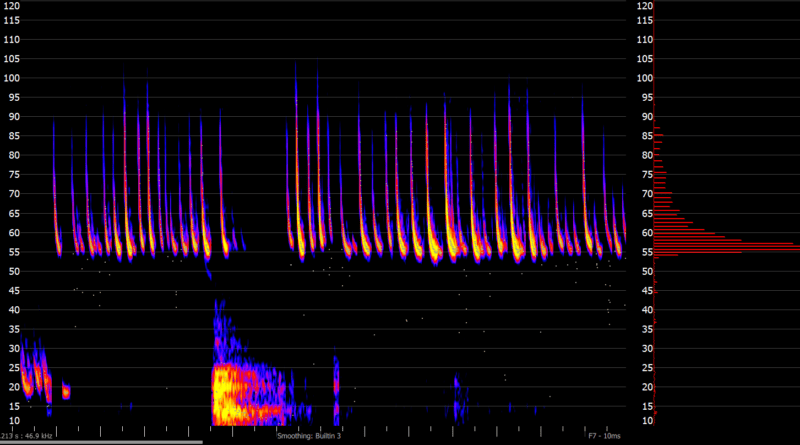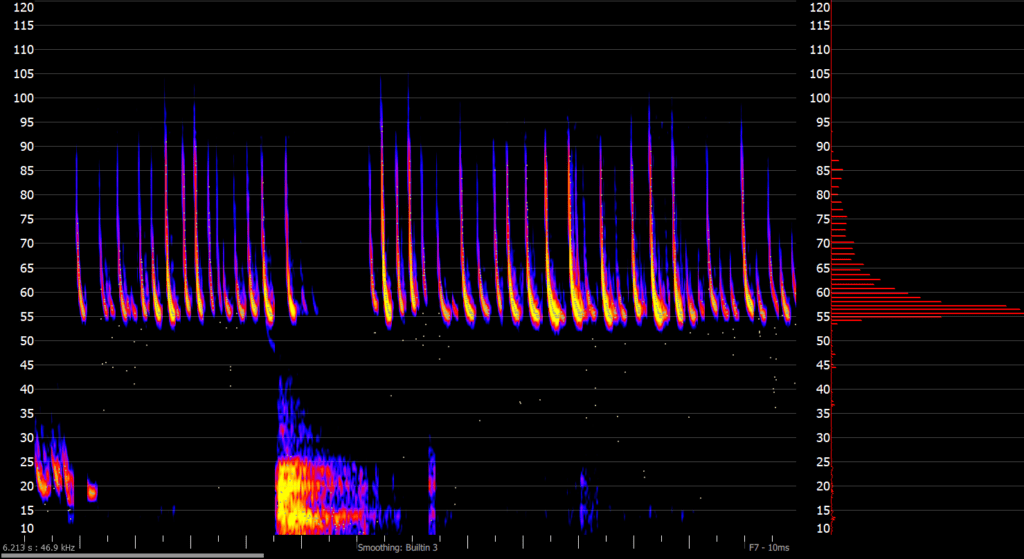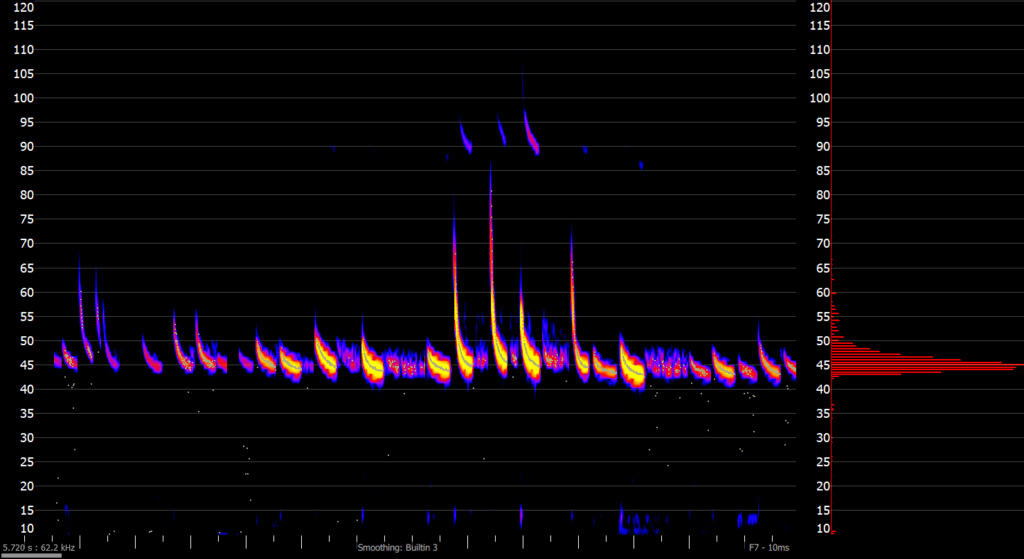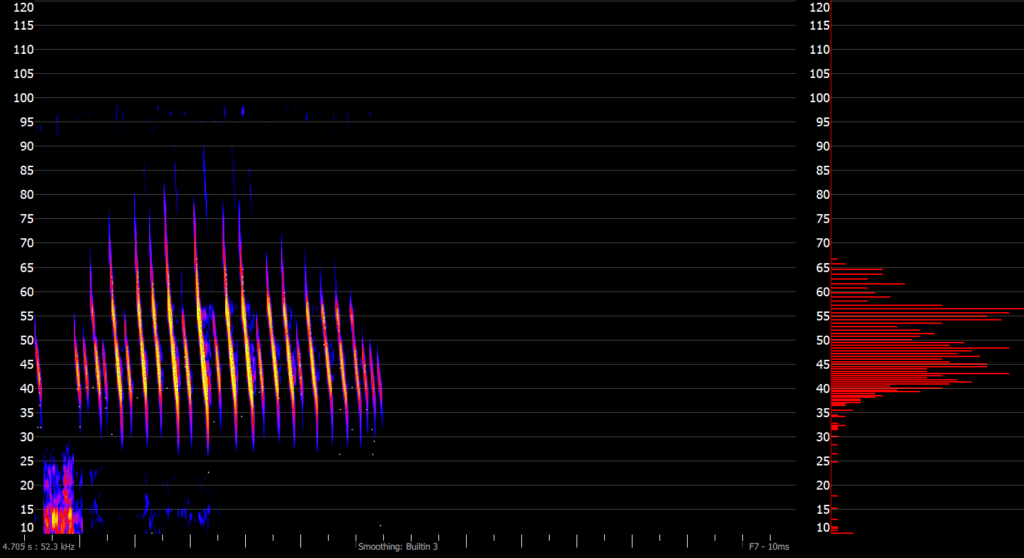Batty Business
These beautiful visualisations are echolocations of Soprano Pipistrelle (55Hz) and Common Pipistrelle (45Hz). You can see how they peak at different frequencies, allowing them to be identified as different species. The third image is of a single Myotis bat (probably Daubenton’s) it has a very different structure that makes it stand out.
Bat activity on the south side of pond recorded and kindly reported to the Friends Group by Graham Checkley who noted good levels of bat activity in the area he monitored “equivalent to that seen at other lochs in the vicinity at their best ……. with a peak rate of 221 recordings in an hour, roughly 50/50 Common Pipistrelle and Soprano Pipistrelle. This doesn’t mean there were 221 bats, just that the recorder was triggered 110 times and that each recording showed both species as present. As each recording can last up to 30 seconds that means the recorder was running pretty much flat out to keep up.’
Graham monitored the area with a static detector over three nights, these images are from the 22nd March. “The temperature on the 22nd remained over 8C, there was no rain and the wind speed was a maximum of 11 mph from the south-west. So good feeding conditions.”
Once there are some more reasonable overnight temperatures Graham intends to deploy two bat detectors, one at the same place and a second at the brightly lit north end of the boardwalk so he can compare activity at the two spots at the same time.






